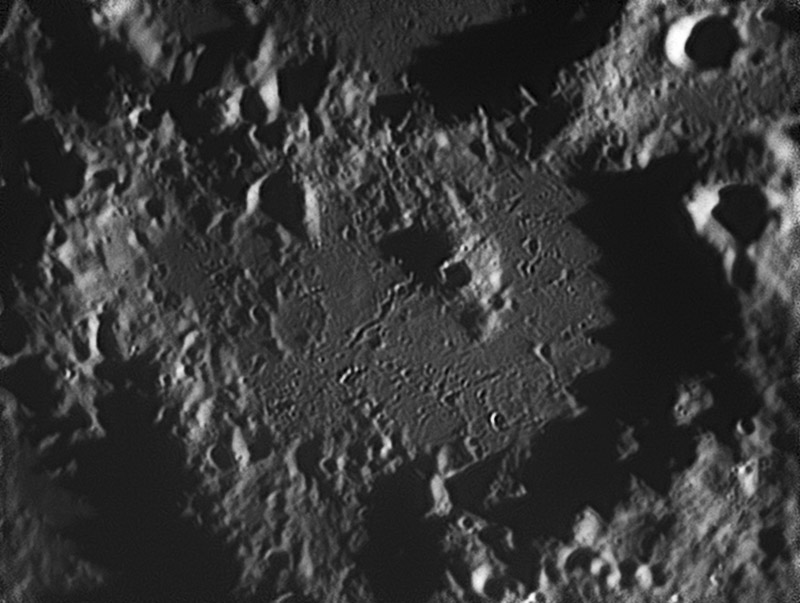January 24, 2014
Nicely Centered Impact

image by Leo Aerts, Belgium
Sat on by Purbach at the top, and squeezed by Deslandres to the southwest, Regiomontanus is an older version of Copernicus. At 110 km in diameter it probably formed as a complex crater with a broad flat floor ringed by dramatic terraces, and a cluster of peaks near its center. A flat floor remains, but it is 3 km below its highest remaining rim, much less than its original 4-5 km depth, so it has been filled with a 1-2 km thickness of material slid down from it rims (talus it is called), and more importantly, with ejecta from the formation of nearby craters and basins. The left side of the floor holds one or more breached craters, showing that there was an interval of time between the formation of those craters and when their rims were cut through. The rille-like chain near the central peak and many others of the small craters on the floor appear to be secondaries, but surprisingly none are radial to Werner, which is nearby and youthful. The main reason anyone ever observes or talks about Regio is because its central peak seems to have a crater near its summit. Patrick Moore and others claimed that this was too unlikely to be an impact crater so the peak must be a volcano and the pit is its volcanic vent.And if the peak is volcanic probably the crater is too, and all the other craters as well. Forty to fifty years ago people looked for other possible pitted volcanic peaks and calculated the aggregate area of the peaks and the statistical likelihood that the pits were or were not random impacts. But the reality of the summit pits of many of the other examples, such as Plinius, were quite uncertain, and the argument proved nothing. Now we have multispectral images that show that the Regiomontanus peak and pit look just like the surrounding highlands rocks, with no evidence of a volcanic composition. Also, at high Sun the summit pit looks like a standard small impact crater. This is all consistent with the modern understanding of how central peaks form as the rebound of rocks from depth. Not a volcanic peak. Not a volcanic crater.
Chuck Wood
Technical Details
December 11th 2013 with Celestron 14, 2.5x powermate projection, redfilter. Also use of dispersion filter and DMK webcam 21AU618.
Related Links
21st Century Atlas chart 16.
Yesterday's LPOD: Seeing the Moon Makes Any Day Special
Tomorrow's LPOD: Wilfried Tost
COMMENTS?
Register, Log in, and join in the comments.



